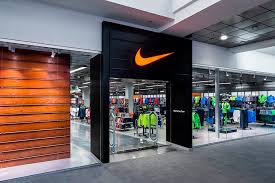The Heart of Every Shopping Experience: The Store
Stores have been the cornerstone of commerce for centuries, serving as physical spaces where buyers and sellers come together to exchange goods and services. From bustling marketplaces to modern retail outlets, the concept of a store has evolved over time, yet its essence remains the same – a place where consumer needs meet business offerings.
The Evolution of Stores
In ancient times, stores were simple stalls or tents set up in market squares or along trade routes. These humble beginnings eventually gave rise to permanent brick-and-mortar shops in towns and cities, offering a wider selection of products and services. With the advent of industrialisation and urbanisation, department stores emerged, providing customers with a one-stop shopping experience.
The Role of Stores Today
In the digital age, online stores have revolutionised the way we shop, allowing consumers to browse and purchase products from the comfort of their homes. However, physical stores continue to play a vital role in the retail landscape. They offer a sensory experience that online shopping cannot replicate – the touch of fabric, the scent of perfume, and the visual display of merchandise all contribute to an immersive shopping experience.
The Importance of Store Design
Store design plays a crucial role in attracting customers and influencing their purchasing decisions. From layout and lighting to signage and displays, every aspect of a store’s design is carefully curated to create an inviting atmosphere that reflects the brand identity. A well-designed store not only enhances the customer’s shopping experience but also reinforces brand loyalty.
Creating Memorable Shopping Experiences
Successful stores go beyond selling products – they create memorable experiences that keep customers coming back. Whether through personalised service, interactive displays, or engaging events, retailers strive to make each visit to their store unique and enjoyable. By building emotional connections with customers, stores can foster long-lasting relationships that extend beyond mere transactions.
Conclusion
As we navigate an ever-changing retail landscape, one thing remains constant – the enduring appeal of the store. Whether online or offline, physical or virtual, stores continue to be hubs of activity where commerce meets community. They are not just places to buy goods; they are spaces where stories are shared, relationships are forged, and memories are made. So next time you step into a store, take a moment to appreciate its role in shaping our shopping experiences – past, present, and future.
Top 7 Benefits of Shopping In-Store: Enhancing the Retail Experience
- Physical interaction
- Immediate gratification
- Personalised assistance
- Instant returns
- Social experience
- Visual merchandising
- Local support
Challenges of Shopping at Physical Stores: 7 Key Drawbacks
- Limited operating hours may not align with customers’ schedules.
- Physical stores may have a limited selection of products compared to online retailers.
- Crowded stores can lead to a stressful shopping experience, especially during peak times.
- Parking and transportation issues can deter customers from visiting physical stores.
- Some stores may lack adequate customer service or assistance for shoppers in need of help.
- In-store prices may be higher due to overhead costs associated with maintaining a physical location.
- Returns and exchanges can be more cumbersome at physical stores compared to online shopping.
Physical interaction
Stores offer a unique advantage through physical interaction, allowing customers to engage directly with products before committing to a purchase. This hands-on experience enables shoppers to assess the quality, functionality, and suitability of items in a way that online shopping cannot replicate. By touching, feeling, and trying out products in person, customers can make more informed decisions, leading to greater satisfaction with their purchases. The ability to physically interact with merchandise not only enhances the shopping experience but also builds trust and confidence in the buying process.
Immediate gratification
One of the key advantages of shopping at a physical store is the immediate gratification it offers to customers. Unlike online purchases that require waiting for shipping and delivery, shopping in-store allows customers to take their purchases home right away. This instant access to products provides a sense of satisfaction and convenience, allowing shoppers to enjoy and use their new items without delay. The ability to see, touch, and take home products immediately enhances the overall shopping experience and adds a tangible element of excitement to the purchase process.
Personalised assistance
One of the key advantages of shopping in a store is the personalised assistance offered by store staff. Unlike online shopping where interactions are limited, store employees can provide tailored recommendations and guidance based on individual needs and preferences. Whether it’s finding the perfect outfit, selecting the right skincare product, or choosing a gift for a loved one, the human touch of personalised assistance enhances the shopping experience and ensures that customers receive expert advice to make informed decisions.
Instant returns
One significant advantage of shopping at a physical store is the convenience of instant returns. Unlike online purchases that may require shipping items back and waiting for refunds or exchanges, in-store returns or exchanges are typically quicker and more straightforward. Customers can simply bring the product to the store, present their receipt or proof of purchase, and have the issue resolved on the spot. This immediacy not only saves time but also provides a more seamless and satisfying shopping experience for those who prefer instant solutions to any purchase-related concerns.
Social experience
Shopping in a store offers a unique social experience that online shopping cannot replicate. The opportunity to browse products alongside friends or family members creates a bonding moment as you share opinions, make decisions together, and enjoy each other’s company. Whether it’s trying on clothes, sampling new products, or simply exploring the store’s offerings, the social aspect of shopping in a physical store adds a fun and interactive dimension to the overall shopping experience.
Visual merchandising
Visual merchandising is a powerful pro of stores, as it involves the strategic use of visual displays to showcase products and create an engaging shopping environment. By carefully arranging merchandise, using creative lighting, and incorporating eye-catching signage, stores can capture the attention of customers and influence their purchasing decisions. This artful presentation not only enhances the overall shopping experience but also helps to communicate the brand’s identity and values effectively. Visual merchandising transforms a store into a dynamic space where products come to life, sparking curiosity and inspiring customers to explore further.
Local support
Shopping at local stores provides invaluable support to the community by bolstering the local economy and fostering job creation. By choosing to shop locally, individuals directly contribute to the financial well-being of their neighbourhoods, enabling small businesses to thrive and grow. This not only sustains the unique character of the community but also creates employment opportunities for residents, ultimately strengthening the social fabric of the area. Embracing local stores is not just a shopping choice; it is a commitment to building a sustainable and prosperous community for generations to come.
Limited operating hours may not align with customers’ schedules.
One significant drawback of traditional brick-and-mortar stores is their limited operating hours, which may not always align with customers’ busy schedules. For many working individuals or those with other commitments, finding time to visit a store during its set opening hours can be challenging. This constraint can result in missed opportunities for potential sales and customer interactions, ultimately impacting the overall convenience and accessibility of the shopping experience.
Physical stores may have a limited selection of products compared to online retailers.
One drawback of physical stores is their potential limitation in product selection when compared to online retailers. Due to space constraints, brick-and-mortar stores may not be able to offer the extensive variety of products that can be found on e-commerce platforms. Customers browsing in-store may find themselves restricted to the items available on shelves, whereas online shoppers have access to a vast array of choices at their fingertips. This disparity in selection can sometimes lead to frustration for consumers seeking specific items or looking for a wider range of options to choose from.
Crowded stores can lead to a stressful shopping experience, especially during peak times.
Crowded stores can indeed detract from the joy of shopping, particularly during peak times when aisles are congested and queues are long. The hustle and bustle of navigating through throngs of shoppers can create a sense of overwhelm and impede the ability to browse leisurely or make informed purchasing decisions. Moreover, the heightened noise levels and lack of personal space in crowded stores can contribute to feelings of stress and frustration, detracting from the overall shopping experience.
Parking and transportation issues can deter customers from visiting physical stores.
Parking and transportation issues can present a significant drawback for customers when it comes to visiting physical stores. The frustration of finding a parking spot nearby or dealing with limited public transport options can deter potential shoppers from making the effort to visit a store in person. These challenges not only inconvenience customers but also impact their overall shopping experience, potentially leading them to opt for online shopping alternatives that offer more convenience and accessibility. Retailers must address these concerns to ensure that customers feel welcomed and valued when choosing to visit their physical stores.
Some stores may lack adequate customer service or assistance for shoppers in need of help.
In some instances, the downside of shopping at certain stores is the absence of sufficient customer service or assistance for shoppers seeking help. This can lead to frustration and confusion for customers who require guidance or support during their shopping experience. Without readily available staff to provide assistance, shoppers may feel neglected or overwhelmed, impacting their overall satisfaction and likelihood of returning to the store in the future.
In-store prices may be higher due to overhead costs associated with maintaining a physical location.
One significant drawback of shopping in-store is that customers may encounter higher prices compared to online retailers. This price disparity often stems from the overhead costs involved in maintaining a physical store location, such as rent, utilities, and staffing. These additional expenses are factored into the pricing of products, ultimately leading to a higher cost for consumers who choose to shop in-store. Despite the convenience and immediacy of in-person shopping, customers must weigh the benefits against the potential premium they may pay for the tangible shopping experience.
Returns and exchanges can be more cumbersome at physical stores compared to online shopping.
Returns and exchanges at physical stores can often be more cumbersome compared to online shopping due to various factors. In-store returns may require customers to visit the store in person, potentially facing long queues and limited operating hours. Additionally, the process of returning or exchanging items in-store can be more time-consuming as it involves interacting with store staff and navigating through store policies. Unlike online returns that can be easily processed with just a few clicks, physical store returns may involve filling out paperwork or providing additional documentation, adding an extra layer of complexity to the process.


